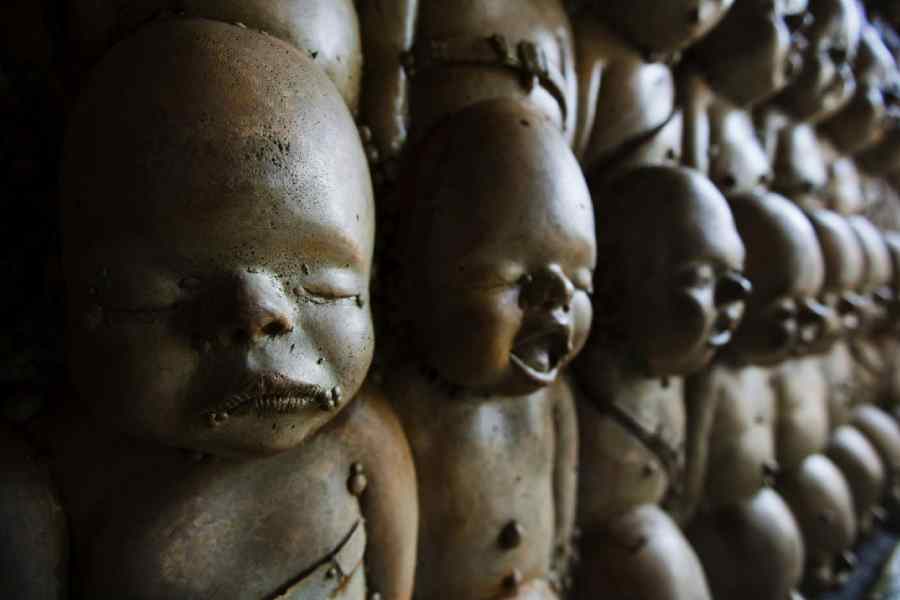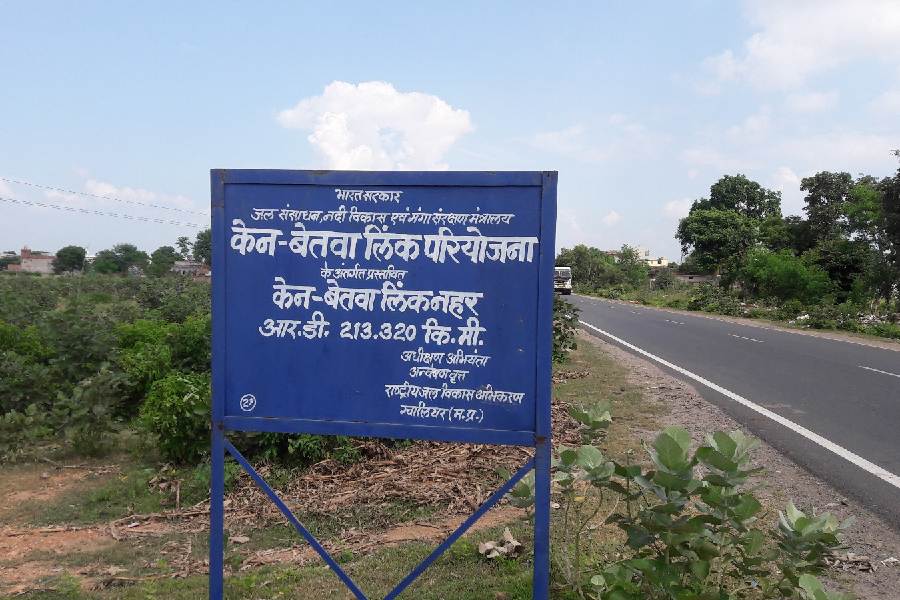Toy story
Sir — Toys are much more than playthings for children. They can be tools to impart important lessons. Recently, a woman took her child to an indoor park and found toy installations of body bags, symbolising the horror of children dying in wars. While those who put up the installations have apologised, alerting children about the violence that many of their peers are facing is a necessity. Come Halloween, children will gleefully hang skeletons as decor. What is decor for some children is a horrible lived reality for others. Toys are thus the perfect way to make children aware of the value of life in the hope that they will grow into adults who choose the path of peace.
Shuvangi Swarup, Mumbai
Fresh face
Sir — The unveiling of the new statue of Lady Justice in the Supreme Court has marked the beginning of an era in the Indian judicial system. The Indian judiciary wants to do away with colonial laws and form independent legislations. Courts in India are also infamous for their slow pace. One hopes that with the new statue, the old
ways of courts will also improve. The redesigned statue will hopefully draw attention to women’s safety as well.
Replacing the sword in the hand of the previous Lady Justice with the Constitution, shedding the blindfold and altering the dress to a saree have contributed towards giving the statue a look more aligned with the newly unveiled criminal laws.
Kirti Wadhawan, Kanpur
Sir — Lady Justice in India no longer sports a blindfold or carries a sword. Instead, she has been handed the Indian Constitution. Symbolism, however, matters precious little. The efficiency of the Indian judicial system is dubious and the delivery of justice is painfully tardy and financially draining. Furthermore, it often favours the rich. The new statue of Lady Justice will mean nothing if the lakhs of litigants waiting for justice do not receive it properly.
Our judicial system, in reality, would perhaps be better symbolised by a morose woman praying for justice, which is more a matter of chance than a certainty.
Avinash Godboley, Dewas, Madhya Pradesh
Sir — The Supreme Court has unveiled a new statue of Lady Justice which is more in keeping with the Indian judicial ethos. The six-foot-tall statue in the judges’ library is of a saree-clad woman without a blindfold, holding a pair of scales and the Constitution. The blindfold in the classic rendition represented the impartiality of justice whereas the new statue with unimpeded vision signifies that law is not blind and is equally binding on all.
Nikhil Akhilesh Krishnan, Navi Mumbai
Sleepy nation
Sir — In the article, “Battle to reclaim sleep” (Oct 19), Arun Kumar argued that present-day society is built on sleep deficit and its effect is perceivable: drowsy drivers, for example, cause fatal accidents on highways. Corporate bosses, like the Infosys co-founder, N.R. Narayana Murthy, advise youngsters to opt for 70-hour workweeks for successful careers, apparently oblivious to the fact that employees have lives outside of their workplaces.
Kumar rightly said that a nation that sleeps less is less productive as more of its citizens will suffer from ailments as sleeplessness increases. One way forward in this situation is for people to take adequate naps and for companies to ensure work-life balance.
Jahar Saha, Calcutta
Sir — Arun Kumar’s article assumes importance in the light of recent reports of drowsy drivers causing fatal accidents. According to a study, almost a third of app-based cab drivers work for 14 hours a day. Furthermore, 78% of app-based delivery persons spend over 10 hours each day at work and 34% earn less than Rs 10,000 per month. All of these data point to a society that promotes a toxic work culture. Long work hours and the rising popularity of the 10-minute doorstep delivery policy of many e-commerce platforms result in numerous traffic accidents in our country.
Sujit De, Calcutta
Sir — Physicians often come across cases of insomnia-related psychotic disorders that lead to depression and anxiety. Perhaps this is to be expected from an industrialised society with inhuman working hours. The mechanisms of sleep and dreaming continue to be poorly understood.
Basudeb Dutta, Nadia
Risky job
Sir — Nearly 90% of domestic workers in India are women or children who are deprived of their rights and are vulnerable to violence (“Body politics”, Oct 22 ). They face stigma for doing ‘dirty’ work, earn low wages, and lack social security. The recent incident of abuse faced by a domestic helper in Gurugram is an example of the community’s vulnerability in workplaces. The government must ensure basic employment benefits like minimum wages, weekly leaves, housing, education and skill upgradation to improve their socioeconomic condition. It is also important to remove the taboo around this profession through awareness campaigns.
Prasun Kumar Dutta, West Midnapore











